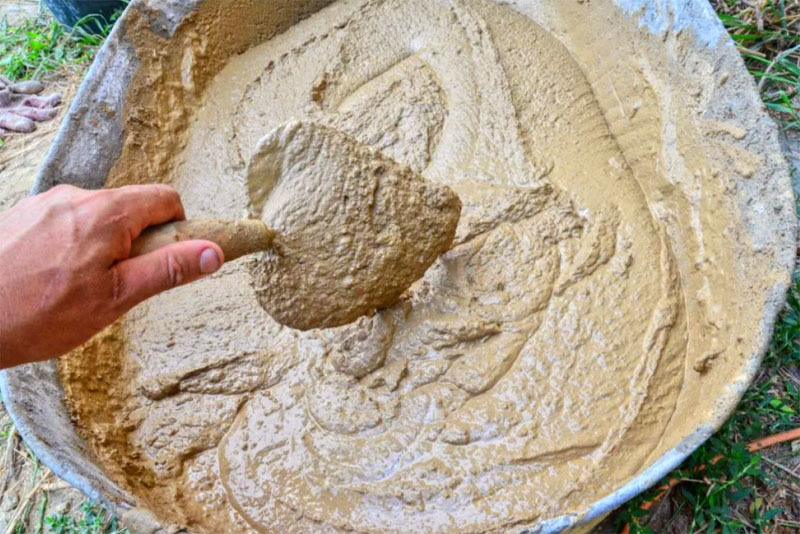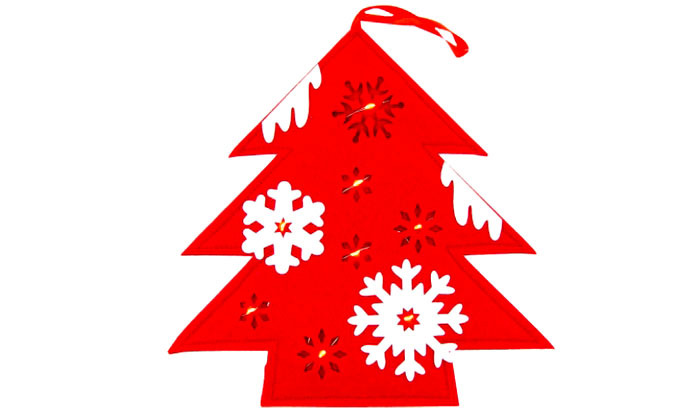Delicate and sweet fruits of the pear, for thousands of years, are pleased with their amazing taste of humanity. The more offensive that in the middle of Russia this fruit is not as popular as mandarins, watermelons and bananas. Pear is a plant that is thermophilic and extremely fastidious to growing conditions. But the selection does not stand still - the best varieties of pears have appeared, which can be successfully grown not only in the south, but also in household plots of the central Russian belt.
In terms of maturing, pear varieties are divided into three groups: early, fall and winter. Each of these groups is represented by a variety of interesting and promising varieties.
10
Chizhovskaya
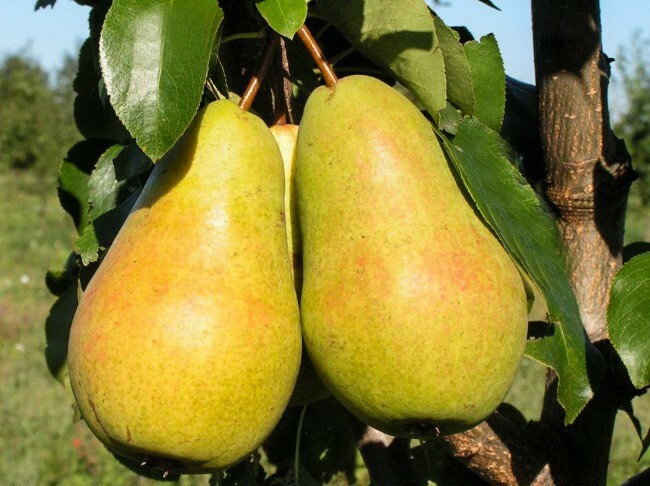
The best autumn varieties of the pear are "Chizhovskaya" with an early maturity of the harvest. Fruits are yellow, rather large. The shape is pear-shaped. The skin of the fruit is smooth, matte and thin. Pulp light yellow, almost white, medium juiciness. The fruits are pleasant refreshing sour-sweet taste. Maturation occurs in the middle-end of August.
The variety is frost-resistant and high-yielding. Resistant to extreme growing conditions, but is afraid of sudden temperature changes and changes in soil moisture. This can lead to cracking of the fruit and, as a consequence, to the appearance of fungal diseases.
One of the merits of the variety - after maturing the fruits do not crumble from the tree.
9
Lada
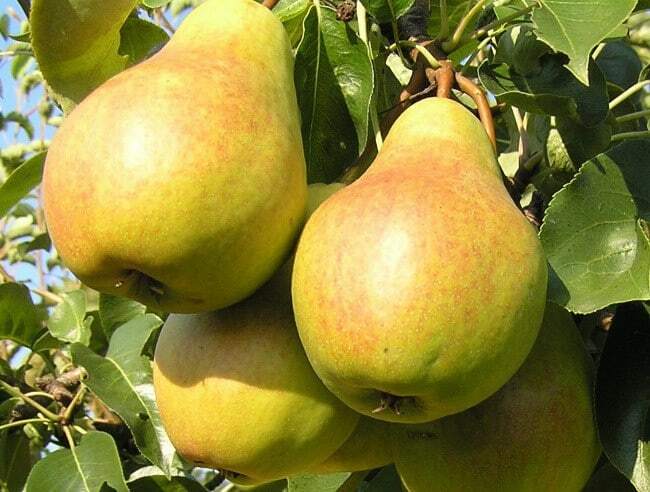
"Lada" is one of the best early summer pear varieties. This is one of the most popular varieties of pears. Fruits are small, weighing up to 100 grams, yellowish with almost imperceptible pinkish blush on the sides. The fruit has a juicy fine-grained pulp with a delicate aroma. The variety ripens by mid-August. It has good resistance to colds and diseases. From the minuses of "Lada" is worth noting the fact that the fruit trees of this variety begin for 3 years after planting. In addition, the old trees begin to grow smaller.
The variety is highly valued for its unpretentiousness to growing conditions, excellent yield and excellent taste qualities.
8
Duchesse summer
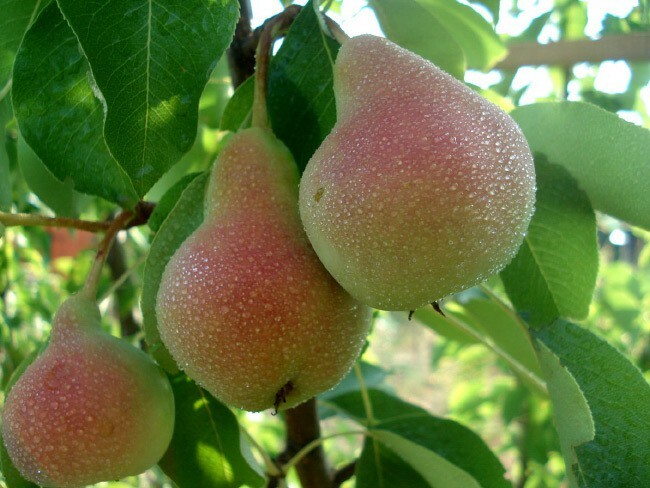
Williams , or Duchesse summer is an old English variety, a classic and a standard among the best sorts of pears. It was bred in the late 18th century in the county of Berkshire. They grow mainly in southern regions. The fruits are large, weighing 170-200 grams, pear-shaped. Color - yellowish. The side of the fruit facing the sun has a beautiful reddish glow. Externally, the fruits of the variety "Williams" look very nice. The pulp is creamy, sometimes white. The fruits differ in juiciness, wine-sweet taste and a tremendous aroma of muscat.
There are flaws and disadvantages - it does not tolerate drought and cold. Since "Williams" is self-fertilizing, it is necessary to plant a cultivar next to it.
7
Rogneda

The best grades of the pear are "Rogneda" .This is an autumn variety that ripens in late summer. One of the merits of Rogneda is almost complete immunity to garden diseases. The variety is winter-hardy and is not afraid of sudden changes in temperature.
Fruits have a yellowish-orange coloration with numerous subcutaneous points, rather large, rounded. Pulp is sweet and fragrant. Fruits last up to 3 months in a refrigerator or other cool room.
Disadvantages of the variety - the crumbling and irregular fruiting.
6
Otradnenskaya
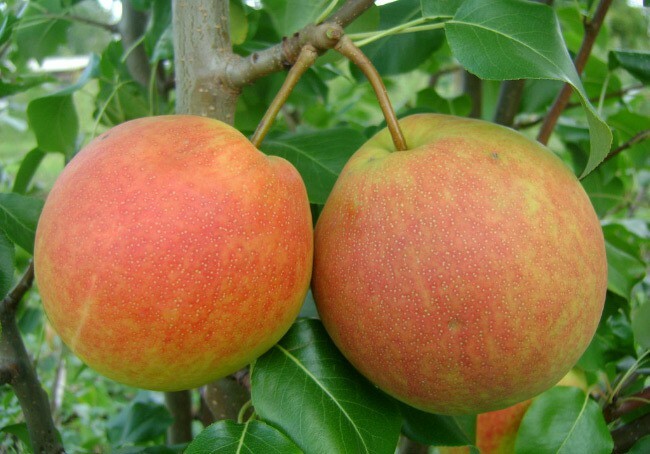
Otradnenskaya is an autumn pear variety with an early maturation period. Harvest can be harvested at the end of September. The high yield is related to the quality of the variety. Fruits of medium size, greenish-red color, oblong-round. The skin is smooth and matte, the subcutaneous points are weak. Pulp is sour-sweet, light, without pronounced flavor. For a season from one tree it is possible to collect 30-40 kg of fruits.
The variety is weakly susceptible to diseases and has excellent winter hardiness.
5
Marble
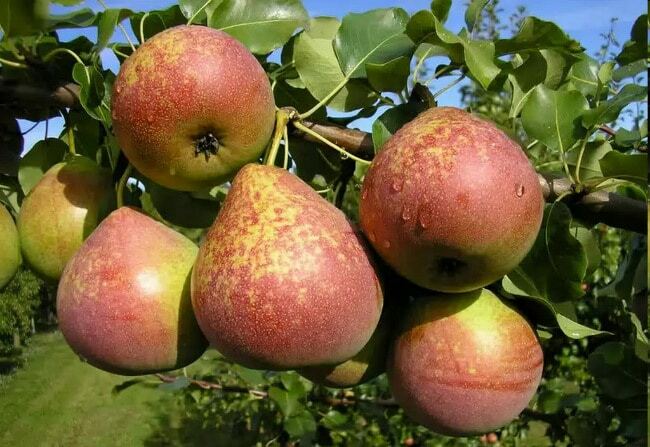
"Marble" is one of the best autumn pear varieties. The crop ripens by the end of summer. Fruits are medium in size, round in shape, weighing up to 180 grams. Pear coloration is greenish-yellow with orange-red blush. The flesh is creamy and yellowish in color. The taste is gentle, with a delicate pleasant aroma.
The variety has an average resistance to winter. Productivity is high."Marble" is practically not affected by scab.
4
Autumn Yakovleva

"Autumn Yakovleva" is one of the most popular pear varieties suitable for cultivation in the central strip of Russia. Harvest can be harvested in late August. Fruits of medium size, round-rhombic shape. The pulp is juicy, tender, but slightly aromatic.
The variety is prized for stable high yield and excellent taste qualities. The advantages of the variety include good winter hardiness and high drought resistance. Unfortunately, "Autumn Yakovleva" is easily amazed by the scab - this is the main disadvantage of the variety.
3
Bir Moscow
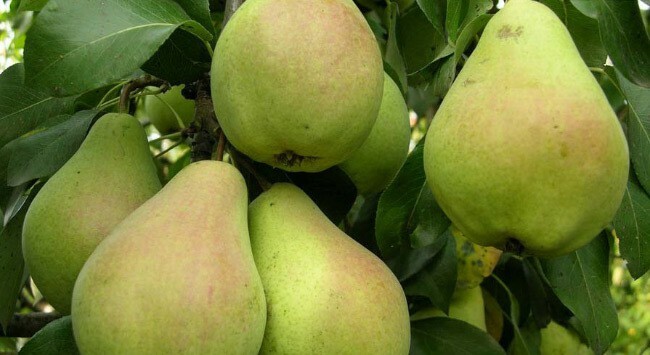
"Birau Moskovskaya" is one of the best young autumn pear varieties with excellent winter hardiness. The harvest ripens by mid-September. Fruits of medium size, weighing up to 110 grams, pear-shaped and with a thin skin. Color yellowish pink. The pulp is juicy, medium sweet.
The variety is characterized by good yield and excellent resistance to diseases.
Disadvantages:
- fruit quickly perespevayut;
- hot weather negatively affects the taste of fruits.
2
Conference
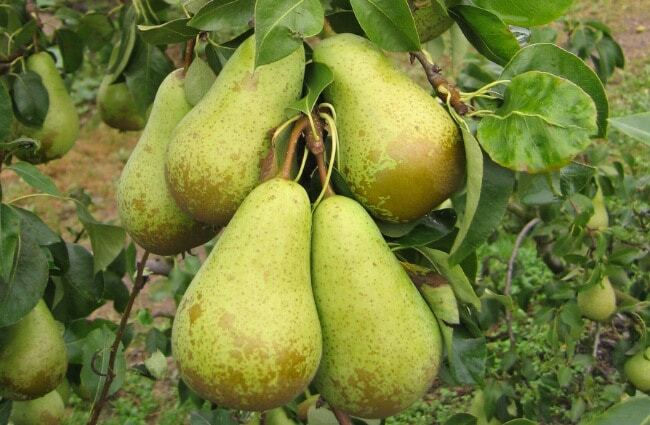
"Conference" - one of the most famous and popular varieties of pears. It is possible to meet it most often in supermarkets and markets. The harvest ripens in late September - early October. Fruits are large, recognizable elongated pear-shaped, green with dense skin. The flesh is creamy pink, very sweet and juicy. To make the fruits more tasty, they need to lie a little - after vylezhivaniya, they get a wonderful aroma and oiliness. The variety is appreciated for its sweet taste and excellent yield. In many countries the "Conference" is grown on an industrial scale.
1
In memory of Zhegalov

The best grades of the pear are "In memory of Zhegalov" .It is a late-autumn variety that is resistant to colds and diseases. Fruits of medium size, weighing up to 130 grams, double-conical shape, greenish-yellow color. The flesh is light yellow, sometimes whitish, juicy, with a rich aroma.
Since the variety is self-fertilizing, it needs the selection of pollinating varieties. This is his only drawback.


